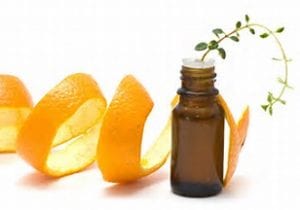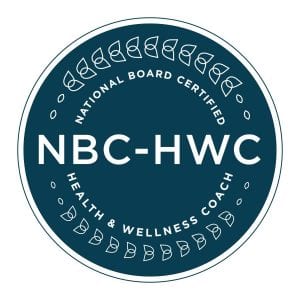 Essential Oils! They are everywhere. Be careful. Educate yourself. Don’t just buy because you attend a party. As a matter of fact, that is (in my opinion), the worst place from which to buy your Essential Oils. This new and popular wave of “all things health-giving” do have their place in our health care regimen, but learn about them before you buy, and learn about them from a trusted source. Dr. Eric Z is my source for truth and information – he doesn’t sell any oils so you can trust his objectivity and research. Essential Oils are much more beneficial than medicines and have no side effects, however, you do need to know what you’re doing, and you do need to know some basic information before you begin, so read on.
Essential Oils! They are everywhere. Be careful. Educate yourself. Don’t just buy because you attend a party. As a matter of fact, that is (in my opinion), the worst place from which to buy your Essential Oils. This new and popular wave of “all things health-giving” do have their place in our health care regimen, but learn about them before you buy, and learn about them from a trusted source. Dr. Eric Z is my source for truth and information – he doesn’t sell any oils so you can trust his objectivity and research. Essential Oils are much more beneficial than medicines and have no side effects, however, you do need to know what you’re doing, and you do need to know some basic information before you begin, so read on.
I’ll start by saying, oils are not my thing, though I see the value in many of them, and appreciate their validity all the way back to bible times. If it was good enough for them, it’s good enough for me, since if you know me, you know that I am a major proponent of the QUALITY and the purest, back to basic ingredients. So just like I teach with all foods you ingest, ALWAYS look at the ingredients first, then find out the source of those ingredients so you can determine the quality of the ingredients from the seed to the table, so in this case from seed to bottle! Here are some basic requirements for Essential Oils as you begin your search.
Ingredient List Shows Only 100% Pure Oil Look past the front of the oil’s pretty packaging or what the salesperson tells you about the ingredients. Analyze the ingredient list on the back of the bottle for yourself. It should have one item and one item only: 100% pure oil. Some manufacturers will dilute their essential oils with fillers, so you must read the ingredients list to find the truth.
USDA Certified Organic The only reliable way to ensure your oils can never contain heavy metal deposits, chemical pesticide and fertilizer residue is to buy only products bearing the USDA Certified Organic designation. Don’t fall for just “organic” on the label, look for USDA Certified Organic. Plus, USDA Organic Certification covers both the cultivation of the plants used to produce your oils as well as all manufacturing and processing methods from the seed to the bottle.
GMO-Free Immunity problems, accelerated aging, infertility issues, and detrimental changes to the body’s organs and gastrointestinal system have all been associated with GMOs… so why in the world would anyone want them in the essential oils. Make sure your oils are GMO-Free; the USDA Certified Organic designation helps ensure this!
Contaminated Essential Oils are cheaper and widely marketed so know what you are paying for. Every time you use an essential oil, whether through topical application, diffusion, or otherwise, you’re opening up a direct pathway transmitting everything it contains into your body. Ideally, if your oil is truly pure, that would mean you’re getting access to the oil’s beneficial natural compounds. But, sadly most oils sold today are not truly 100% pure.
The term “therapeutic grade” doesn’t carry much weight.
Since the regulatory landscape for essential oils is so open-ended, a group of shrewd marketers decided to start using the phrase back in the 1990s, and according to industry researchers, it bears little to no actual meaning, just like the now-meaningless word, “natural”.
It may shock you to know that the term “therapeutic grade” is what’s called a “first-party designation,” which means its legitimacy is judged only by the company using it. So each manufacturer gets to decide what “therapeutic grade” means to them, and varies wildly.
Which poisonous components are legally allowed in most essential oils available today?
Heavy Metals
Research has already documented the impact chemical fertilizers and pesticides can have on heavy metal concentrations in crop production; one study confirmed toxic levels of heavy metals in rice grown under standard use of these conventional farming methods.
Since the vast majority of essential oils on the market are not USDA Certified Organic, it’s wise to assume that the plants used to produce them are grown with the same dangerous chemicals and to make matters worse, the essential oil extraction process makes the risk of exposure even greater, because these heavy metals will be concentrated during production.
Solvent Residue
Steam distillation and mechanical pressing are the two safest and most effective methods of essential oil extraction, but they’re also the most costly and effort-intensive. As a result, many manufacturers still employ a dirty, outdated method that uses solvents like petroleum ether or hexane. Once these solvents are introduced to the product, it’s nearly impossible to remove them completely from the finished oil.
Fungicides & Insecticides
Anything that comes in contact with the plant material used to produce an essential oil is likely to carry over into the finished product. This includes the chemical pesticides, herbicides, and insecticides used on most herb crops across the world.
Since essential oils aren’t regulated like other products, there’s no standard for the level of pesticide contamination that may occur in the finished oil – though any level should be unacceptable in the first place!
GMO
Modern science is bringing us more and more amazing developments by the day, but there are many people who do not believe that Genetically Modified Organisms are one of them and its effects on humans and the environment still isn’t fully understood.
Bottom Line: there is currently only one way to know for certain that you’re eating foods or using products that do not contain GMOs, and that’s the USDA Certified Organic label, and many of the biggest essential oil manufacturers have refused to pursue the Certified Organic classification.









Follow Me